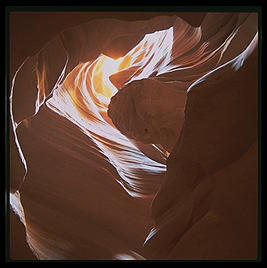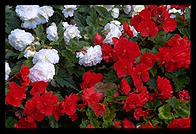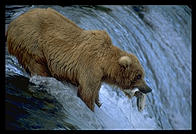If you think you have too many friends, a good way to get rid of most of them is to insist that they come over to your house and watch every slide from your last vacation. Anyway, it worked for my parents...
Seriously, though, a slide show with a good story behind it can work pretty well. Try to pick the best 10 percent of your images to show; if there are 800 on the flash card after a trip, plan an 80-slide show. About half of the photos will be setup shots, not to be dwelt on. For example, you might flash a photo of a "Welcome to Vermont" sign for a second before showing some foliage and barn photos.
There are two kinds of LCD projectors:
Of these two choices, unless you are going to be projecting in a brightly lit environment or have exceptionally high contrast images, the best product available for displaying photographs is a projector designed for showing movies. These are usually called "home theater" projectors.
What are the variables in home theater projectors?
Any modern digital camera will be higher resolution than the best projector. A standard consumer-priced "HDTV 1080p" projector with 1920x1080 resolution is a skimpy 2 megapixels. A 4K projector is roughly 8 megapixels.
Brightness is measured in lumens. The bright projectors advertise 2000 lumens and are important to have if you're projecting in higher ambient lighting conditions or on a screen more than 7' wide. The dim projectors are down under 1000 lumens and have the advantages of lighter weight, greater portability, less heat and therefore less fan noise.
Some good places to start looking for a photo project
Are 35mm projectors dead? Not if you have a lot of old slide trays around and access to eBay. Nor if you want very high resolution without spending $thousands on an HDTV projector. Professional labs will print high-resolution digital files onto traditional 35mm slide film and then you can get excellent image quality with a $100 optical projector.
If you're going to organize your collection into slides, it is nice to be able to carry just the slides around and not the projector. Thus you want to have the same trays that everyone else has. In the United States, that means Kodak Carousel. In Europe, that means "European straight trays".
Which model of projector to buy? It barely matters. The autofocus feature is worth paying for. This compensates for the deformation of slides under the heat of projection, not for focus errors in the original photograph nor to set the lens for sharp focus on your particular screen.
If you are going to glass mount your slides, you can use a variety of fancy lenses ("flat-field"). Otherwise, you'll be pretty much limited to the cheap lens that comes with the projector (softish in the corners) or a Schneider "curved-field" lens. The Schneider lenses sold new for about $250 and are much heavier than the lenses that were included with Kodak projectors.
You need a zoom and/or telephoto lens only if you are going to project in big auditoriums, the slide projector has to be way far back from the screen, and the screen isn't huge.

In the glorious days of film, medium format projectors sold for between $1000 and $2000 and projected gloriously bright and high-resolution images. We will probably have to wait until 2020 before comparable image quality can be obtained from direct digital projection.
Quality came at a price, even in the old days. You usually had to painstakingly chop up the 120 chrome (slide) strips, clean Gepe glass slide mounts, and stick the delicate little images into the mounts. A 6x6cm image is too large to be left free to flop around in front of the lamp. Blunt-nosed tweezers and/or someone with good fine motor skills were helpful in getting the images into the mounts.
What were the high quality choices that you might find in the used market?

There are several different types of screens available. What you want is a flat or matte screen. This provides the sharpest image and widest viewing angle and is also the cheapest type of surface. You'll have to make the room reasonably dark. The other surfaces available screens are designed for MBAs who give presentations in lit rooms. The idea here is that nothing an MBA could possibly say would be interesting on its own so the guy has to have slides with bullets to show as well. Of course, even with the slides, the audience is liable to fall asleep when he hears the tired bromides that Mr. GladHand learned at B-school. So the the ambient illumination will be set fairly high. Rather than just project onto a white surface, what Mr. GladHand needs to do is project onto an array of lenses. These little molded lenses reflect more of the projector light back than a regular white wall or white fabric could. However, they also narrow the angle of reflection so everyone has to sit more or less in front of the screen. Worst of all from a photographer's point of view, these lenses reduce the available resolution of the image. No feature smaller than the little lenses built into the screen can be distinguished. There is no point in taking the trouble to use a digital SLR, prime lens, and tripod if your final goal is projecting onto a screen with little lenses.
A perfectly acceptable brand of screen is Da-Light. I like the ones that you mount up on your ceiling and then can pull down in an instant. Remember to get a flat or matte finish.

If your slide tray is stolen from your minivan, you'll wish that you had written your mailing address on both the outside and inside of the box.